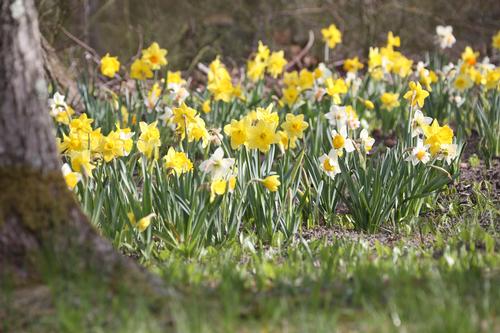HOW TO PROTECT YOUR GARDEN FROM DEER
Deer can be a headache for gardeners. Many of the plants we love growing are plants deer love eating. In early spring, when deer have little else to eat, there are few plants that will escape their nibbling. And, when deer populations are high or food supplies are low, deer will devour almost every plant in sight.
There are a number of ways to protect your garden from deer. Since deer behavior varies by location, finding the strategies that work best in your garden usually requires some trial and error.

DETER WITH REPELLENTS
One way to discourage deer from nibbling is to spray your plants with a repellent that has a bad taste or noxious odor. These repellents work best when they are applied early in the season, before deer get accustomed to visiting your garden for a meal. Start spraying as soon as you see deer hanging around or you notice plants being eaten.
Some of these sprays have quite a strong scent, so you'll want to avoid spraying them into the wind or when your neighbor is having a barbeque.
Tests have shown that alternating between two or more brands of scent deterrents seems to increase their effectiveness. The most highly recommended brands include Plantskydd, Bobbix, Liquid Fence and Messina Wildlife Deer Stopper.

Follow application instructions on the packaging and reapply as recommended. If deer are a significant problem in your area, you may need to spray as often as once a week. For a small garden, a ready-to-use spray repellent will work fine. For larger gardens, it’s easier and more economical to purchase the deterrant as a concentrate and then apply it with a pump sprayer and wand.
FRIGHTEN DEER AWAY
Unexpected sounds or motions scare deer and will make them run for cover. Keeping the activity random is key. Some scare techniques include wind-blown metallic tape, a radio, a motion detector connected to a light, or a motion-activated water sprayer. No device is more effective than a barking dog!
FENCE DEER OUT
Fencing is the most reliable way to protect your garden from deer. Putting a big fence around a large area can be expensive, but smaller areas can be protected more easily, especially for limited periods of time, such as in early spring.
Deer dislike entering confined areas, so for a small garden, a 4-foot tall fence may be adequate. To fence a large area, the barrier needs to be at least 7 feet tall. Where deer pressure is extremely high, fencing should be installed at a 30° angle away from the garden. Remember that hungry deer may try to go over, under or through a fence, so make sure it is securely staked.

STICK WITH PLANTS DEER DISLIKE
Fortunately, there are bulbs, perennials and shrubs that deer usually avoid. These include most thorny plants as well as those with fuzzy or leathery leaves. Many spring-flowering bulbs are not bothered by deer. Daffodils and snowdrops contain a bitter substance that all animals avoid. Deer also tend to ignore hyacinths, muscari, scilla siberica, scilla campanulata, chionodoxa, fritillaria and alliums.
OTHER TIPS FOR DISCOURAGING DEER
Sometimes you can protect a plant that deer love, simply by combining it with plants they tend to avoid. Some gardeners report that this works with ornamental alliums, as deer dislike the allium's onion-y scent. Examples would be interplanting alliums with hostas or lilies.
Keeping susceptible bulbs and plants close to your house will make them less appealing to deer. Those at the edge of your yard will be more vulnerable.
An elevated deck or patio will often discourage deer from bothering potted plants.
Bars of soap (Ivory and Irish Spring are often recommended) can be grated or chopped into pieces and sprinkled around plants to create a scent barrier.
Horticultural fabric, netting or nylon window screening can be used to wrap susceptible plants or to cover small areas of a larger garden.
